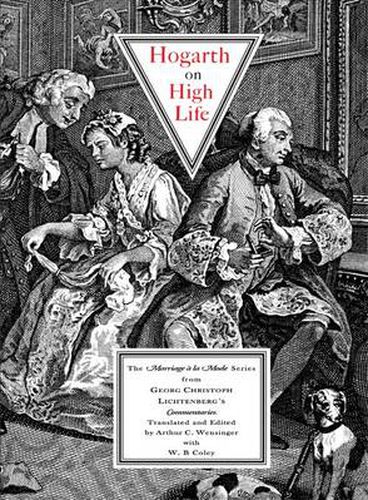Readings Newsletter
Become a Readings Member to make your shopping experience even easier.
Sign in or sign up for free!
You’re not far away from qualifying for FREE standard shipping within Australia
You’ve qualified for FREE standard shipping within Australia
The cart is loading…






Marriage a la Mode is the most famous of William Hogarth’s ‘progresses’ or series paintings, the story of a marriage de convenance and its unhappy consequences in fashionable eighteenth-century London. Contemporaries relished teasing out the meaning of all its rich detail, and the most extensive and popular of all the commentaries on the artist’s accomplishment: was that of the witty, many-sided German, Georg Christoph Lichtenberg. Brillantly translated, thoroughly annotated, this text is accompanied by the earlier and less-known commentary by Hogarth’s friend, the French-Swiss enameller Jean-Andre Rouquet, and by a selection of Lichtenberg’s remarks (in letters to friends) on his purposes and problems in interpreting Hogarth’s work. Included also is another and very rare ‘explanation’ of the plates, an anonymous 1746 pamphlet titled Marriage A-la-Mode-An Humorous Tale, in Six Cantos. A foreword on Lichtenberg, and an historical essay on Hogarth’s work by Mr. Coley, supply necessary background on artist and commentary. Of Hogarth’s greatness there is little that need be said.But it is worth noting that, of his several ‘progresses’ or ‘modern moral subjects’, only Marriage a la Mode centres on the upper levels of British society - the aristocracy and the mercantile class.
$9.00 standard shipping within Australia
FREE standard shipping within Australia for orders over $100.00
Express & International shipping calculated at checkout
Marriage a la Mode is the most famous of William Hogarth’s ‘progresses’ or series paintings, the story of a marriage de convenance and its unhappy consequences in fashionable eighteenth-century London. Contemporaries relished teasing out the meaning of all its rich detail, and the most extensive and popular of all the commentaries on the artist’s accomplishment: was that of the witty, many-sided German, Georg Christoph Lichtenberg. Brillantly translated, thoroughly annotated, this text is accompanied by the earlier and less-known commentary by Hogarth’s friend, the French-Swiss enameller Jean-Andre Rouquet, and by a selection of Lichtenberg’s remarks (in letters to friends) on his purposes and problems in interpreting Hogarth’s work. Included also is another and very rare ‘explanation’ of the plates, an anonymous 1746 pamphlet titled Marriage A-la-Mode-An Humorous Tale, in Six Cantos. A foreword on Lichtenberg, and an historical essay on Hogarth’s work by Mr. Coley, supply necessary background on artist and commentary. Of Hogarth’s greatness there is little that need be said.But it is worth noting that, of his several ‘progresses’ or ‘modern moral subjects’, only Marriage a la Mode centres on the upper levels of British society - the aristocracy and the mercantile class.